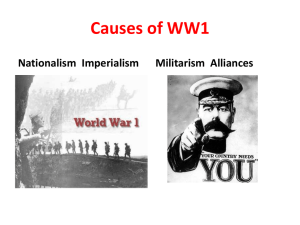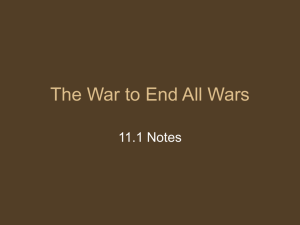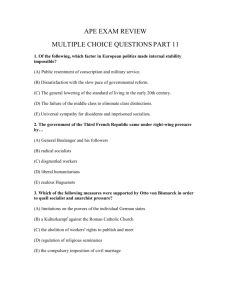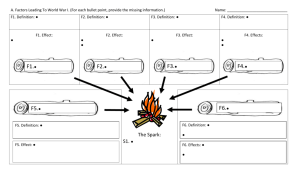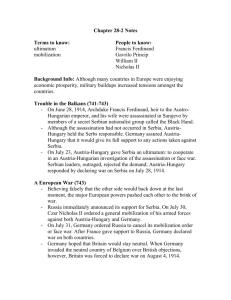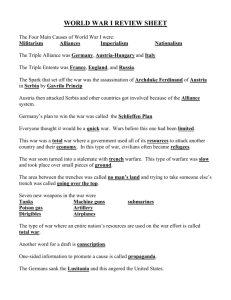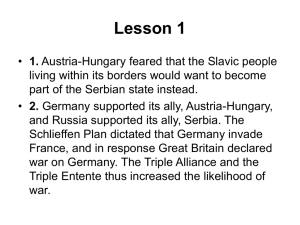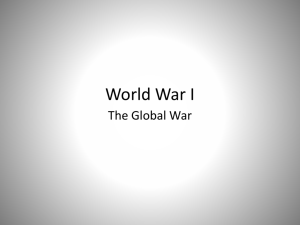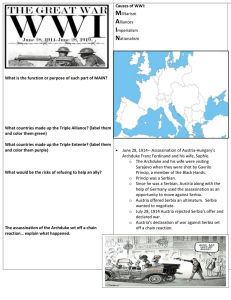Ch. 23 WWI Part I
advertisement
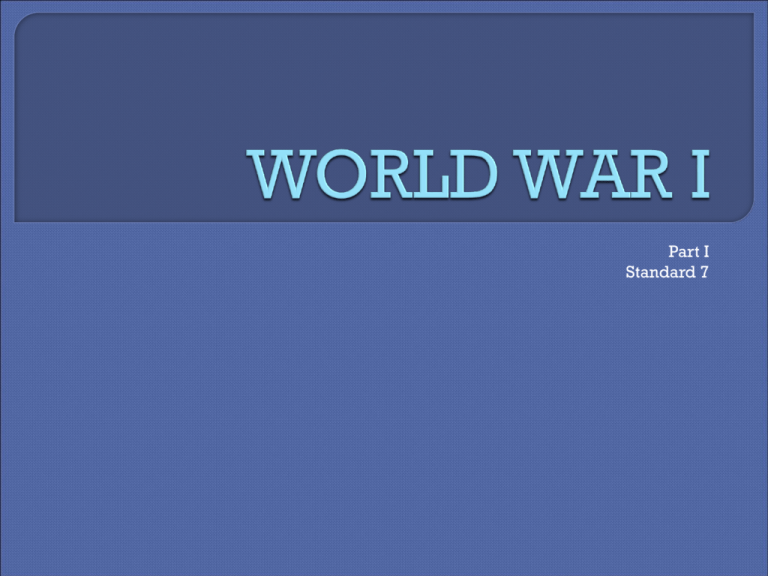
Part I Standard 7 Long Term Causes • Militarism - Building strong modern armies Nations hope large armies with modern weapons will prevent attacks • Alliances: a union or association formed for mutual benefit, especially between countries or organizations. If someone messes with me you got my back right? • Imperialism - Extending one’s influence into other territories Nations compete over territory & resources • Nationalism - Deep sense of national identity & pride Rivalries develop over territory, resources, and perceived insults Alliance System • Agreements bind countries together in case of war Triple Alliance (1882)- Germany, Italy, Austro-Hungary Triple Entente (1904)- Great Britain, France, Russia Assassination of Franz Ferdinand • Archduke of Austria-Hungary & wife were shot and killed on June 28, 1914 during a visit to Sarajevo, Bosnia. Black Hand Terrorist group hoped to bring attention to their nationalist cause Shooter- Gavrilo Princip The Blank Check - Germany offered unconditional support of Austria-Hungary’s response to the assassination Austria-Hungary made harsh demands on Serbia (allow AH soldiers to investigate, stop anti-Austrian press, etc.) July 28, 1914 - AH declared war when Serbia refused demands War declaration kicks the Alliance System into motion: • Germany joins Austria in war on Serbia • Russia mobilizes troops to protect Serbia • Germany institutes the Schlieffen Plan to avoid a 2 front war holding off Russia with minimal strength and swiftly defeating France by a massive flanking movement through the Low Countries Russia & France were allies • Germany must attack France & Russia to avoid 2 front war WESTERN AND EASTERN FRONTS France was more modern so should be defeated first, then Russia could be dealt with German invasion through Belgium during attack on France brought Britain into WWI Schlieffen Plan failed when stiff French resistance slowed German attack • One of the early battles of WWI • Causes the Germans to re-treat from France • Marks the beginning of Trench Warfare Trench Warfare - fighting from deep, long interconnected ditches • Central area (“No Man’s Land”) guarded by machine gun nests, land mines • Trenches protected by earthen walls, barbed wire • Charges required aerial bombardment & artillery, followed by open charge, and hand-to-hand combat Trench Warfare was slow and deadly • Millions died fighting over a few miles of territory on the French-German border • Territory shifted hands often in course of war No trenches, but slow & deadly Russia’s lack of industrialization left soldiers without supplies, rifles • Russian troops suffered heavy casualties (Over 2 Million in the 1st 2 years of fighting) • German victory at Tannenberg nearly pushed Russia out of the war Central Powers - Germany, AustriaHungary, Ottoman Empire Allies - Great Britain, France, Russia, Serbia • Later the United States
